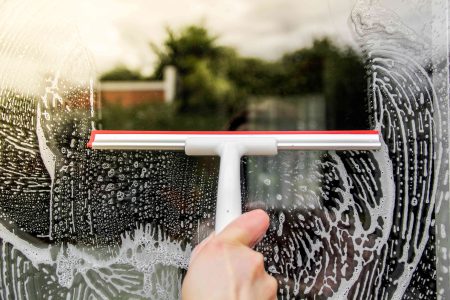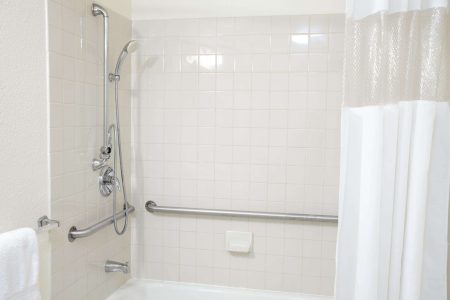An accidental fire can ignite with frightening unpredictability, spread uncontrollably in seconds, and can decimate a home within minutes. House fires endanger everyone in the home and even small fires that are put out quickly often result in thousands of dollars of damage. Having a proper insurance policy is essential to help mitigate the financial losses associated with a house fire, but it is far better to prevent the circumstances that lead to fires in the first place.
According to statistics from the National Fire Protection Association (NFPA), there are more than 350,000 home fires each year in the U.S., leading to more than 2,600 deaths. Fires can be started in a number of ways, but they generally fall into one of two categories: fires caused by heat igniting combustible materials, and those caused by chemical reactions.
Your home is full of objects and materials that can combust under the right conditions. Some of the common causes of house fires are familiar to everyone, while others may surprise you. Identifying and lowering these risks help you lower your chance of house fire, keeping your family and property safer.
-
01
of 07Cooking-Related Fires
Cooking fires are among the most common types of house fires, causing around 49 percent of all residential fires. They are very often caused by greases that becomes overheated on a stove or in an oven. Grease is highly flammable when it gets hot enough (about 600 degrees Fahrenheit, on average), and when it reaches that point, it can combust spontaneously, even without direct flame contact. Once grease is ignited, it is very difficult to smother the flames.
Never leave the kitchen unattended when cooking in oil or when cooking a food that produces grease, such as bacon. Most kitchen fires start because when a homeowner leaves food cooking unsupervised on a stove or in an oven. By the time the fire is discovered, it’s usually too late. Thoroughly clean your cookware to prevent grease from building up over time.
Portable cooking appliances, such as toasters and electric griddles, can also be a source of fires. Never leave these portable appliances unsupervised, and make sure they are cool to the touch before storing them away. Toasters should be regularly cleaned of crumbs that might ignite if they build up inside the appliance.
During the outdoor cooking season, barbecue grills left unattended on a wooden deck or near the exterior walls of a home can also be a source of fire. A heated grill next to a wooden fence can easily cause fire, and grills have been known to ignite the exterior walls of a home or garage if positioned too close.
Small grease fires can be extinguished quickly by turning off the heat and smothering the fire with a metal lid. Sprinkling baking soda or salt on the fire will also put it out, as well. A class-B or class-K fire extinguisher is also recommended, although the chemicals can create a notable cleanup issue.
With serious fires, make no attempt to put out the fire. Instead, call the fire department immediately. Under no circumstances should you dump water over the grease fire, as this can cause the hot grease to explode and throw burning grease over the area.
-
02
of 07Heating Appliances
Home space heaters and baseboard heaters can cause fire when fabrics and other combustibles are left too close to them. Heating and cooling appliances of various types are the second leading cause of residential fires, responsible for over 12 percent of all home fires. According to the Consumer Products Safety Commission (CPSC), some 25,000 home fires caused more than 300 deaths in the U.S. each year (2104 to 2016) as a result of space heaters.
Heaters that require fuel such as kerosene are especially dangerous, as they can ignite or blow up if not properly watched. Electrical heaters can cause fires if the electrical wiring is faulty, or if draperies or other fabrics overheat when they come in contact with the coils.
Always follow the instructions on any heating device you use, and inspect it regularly to ensure it is in good condition.
Never leave the house with a heater running. Space heaters almost always have instructions warning against unsupervised use, but thousands of house fires each year can be attributed to such appliances left running when homeowners are absent. Make sure flammable materials are kept well away from space heaters.
-
03
of 07Electrical Fires
Various types of electrical faults in home wiring cause about 51,000 fires each year, accounting for nearly 500 deaths, 1,400 injuries, and about $1.3 billion in property damage. according to the EFSi (Electrical Safety Foundation international). Most typically, electric fires occur because of short circuits or loose connections causing arcing (sparking) that ignites building materials, or from circuits that are overloaded with current, causing wires to overheat.
Electrical problems account for about 10 percent of all residential fires, but this type of fire is often deadly, accounting for about 18 percent of deaths due to home fire, according to the NFPA Home Structure Fires report. This is likely because electrical fires often ignite in hidden locations and build into major fires before residents are aware of them. And such fires frequently may ignite while residents are sleeping.
Properly installed electrical systems are very safe, with a number of built-in protective features, but old, faulty wiring systems can be susceptible to short circuits and overloading. It’s a good idea to have your wiring checked out by a professional electrician, especially if you live in an older home. And don’t perform your own electrical repairs or improvements unless you understand the principles of electricity and have experience doing such work.
-
04
of 07Smoking
Smoking is hazardous to your health in many ways—including the potential for igniting fires from cigarette butts dropped on carpeting, furniture, or other flammable materials.
Fires from cigarettes and smoking materials cause nearly 600 deaths and over 1,100 injuries each year in the U.S., according to the National Fire Protection Association. While cigarettes and other smoking materials account for only about 5 percent of home fires, these are particularly deadly fires, responsible for about 23 percent of all fire deaths—the single most common cause. This is likely because these fires often ignite when a resident falls asleep.
Smoking in bed is especially dangerous and should always be avoided at all cost. All it takes is a single stray ash to ignite a mattress, blanket, carpet, or piece of clothing. If you must smoke, do it outside whenever possible, or smoke over a sink while using an ashtray to help reduce your fire risk.
Continue to 5 of 7 below. -
05
of 07Candles
The National Fire Protection Association says that between 2014 and 2018, candles caused an estimated average of just over 7,600 fires, with and average 81 deaths and 677 injuries for each of those years. The matches and lighters used to light candles are equally dangerous if left in a place where children can reach them. Keep matches and lighters locked in a secure place if you have kids, and never leave a candle burning in a room that is unattended.
New Year’s Day, Christmas, and New Year’s Eve are the prime time for fires caused by candles. Candles can add a wonderful touch to family dinners and holiday celebration, but always extinguish them before leaving the room. Keep candle flames at least 12 inches from any materials that might ignite.
Consider other options for decorative lighting effects. There are very good battery-powered flameless luminaries that are remarkably realistic, right down to flickering in the same way that candles do.
-
06
of 07Chemical Fires
Although fires caused by chemical reactions are more common in industrial/commercial locations, they are also a common cause of home fires. Residential chemical fires occur most commonly when volatile vapors from gasoline and other petroleum liquids reach a flash-point temperature or when the fumes contact a source of open flame. Another common type of chemical fire is spontaneous combustion—the reaction of chemicals combining with oxygen in the air to produce enough heat to reach a flashpoint and ignite in flame.
Chemical fires of various types cause approximately 14,000 fires each year, according to the NFPA, and while a relatively small number of these are residential fires, they can be especially deadly because they are so unexpected.
Store all fuels and other chemicals in their proper containers and keep them in locations that are protected from heat. A common source of this kind of fire is the gasoline or other fuel used to power lawn equipment. Tips for safely storing gasoline:
- Use an approved container. The best storage container for gasoline is a red plastic container that is printed with labeling identifying it as an approved container.
- Fill the container no more than 95 percent full. This allows a space for vapors to expand without rupturing the container.
- Keep containers tightly sealed to prevent gas vapors from escaping and possibly reaching a source of flame or spark.
- Store the container at least 50 feet away from pilot lights and ignition sources, such as the heat, sparks, and flames from a water heater, space heater, or furnace. A detached garage or shed is an ideal spot to store these fuels. If no such space exists, then store fuel containers on the outside wall of an attached garage, as far as possible from living spaces.
Another cause of chemical fires is when oily rags spontaneously heat up. Never store oil-soaked or chemical-soaked rags after they are used. And, especially never stack them in a pile, because heat can be spontaneously generated as the fumes combine with oxygen. Oily rags should be spread out in an outdoor location until the oil evaporates. Once thoroughly dry, they can be washed for reuse.
If possible, store paint thinners, mineral spirits, and other flammable liquids in a fireproof cabinet is a location well separated from living spaces. Make sure individual containers are kept tightly sealed.
-
07
of 07Christmas Trees
Christmas trees are a holiday tradition for many families, but they come with some risks. Real evergreen trees tend to dry out over time, and by the end of the holiday season, they can pose a very serious danger of flash fire. A hot light or a spark can immediately set the tree aflame, and such fires spread incredibly fast, engulfing a room in a matter of seconds.
While fires caused by Christmas trees are much less common than other causes (about 160 cases annually in the U.S., according to the National Fire Protection Association), such fires can be deadly. They account for two deaths and 14 injuries each year.
Artificial trees made with vinyl or plastic needles are safer in this regard, but an electrical fire from a bad wire in the light-bulb string or an overloaded outlet is still a risk. Never leave Christmas tree lights plugged in when you are not at home or when you are sleeping, no matter if the tree is natural or artificial. Check natural trees regularly to ensure they are not too dry. Make sure the water reservoir is kept full, which will prevent the tree from becoming tinder-dry.
Older Christmas tree lights that use incandescent bulbs can generate quite a lot of heat and are best replaced by lights using LED (light-emitting diode) bulbs, which are considerably cooler to the touch. But all light bulb strings should be regularly inspected and discarded if they show bare wires or other problems.
Holiday lights are sometimes used elsewhere in the home, such as around windows. These light strings can also cause draperies or other materials to ignite if they are faulty or if they are used improperly.
Read the full article here









